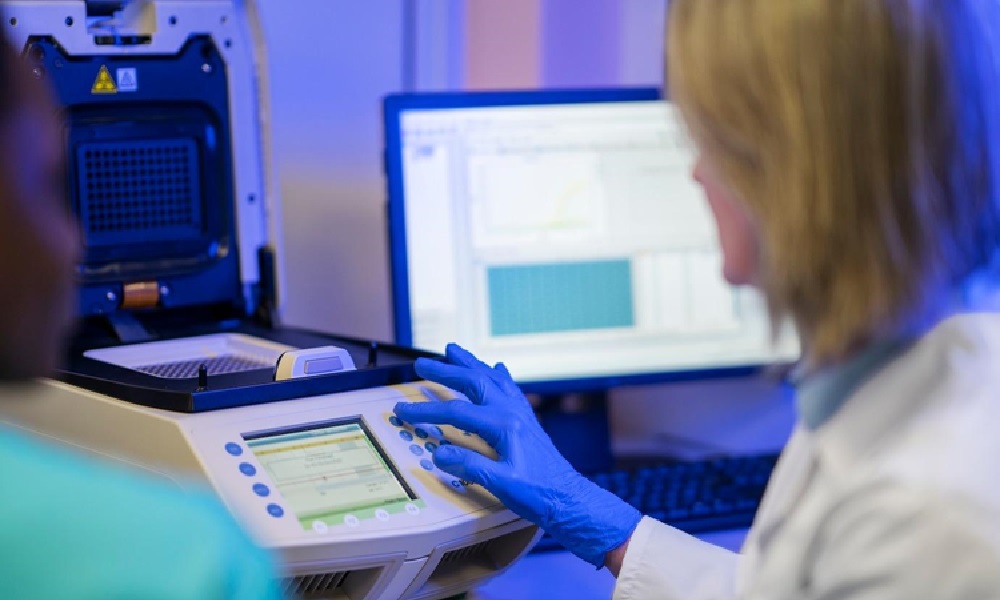
Advanced Tools And Techniques For Monitoring Cancer Treatment Efficacy
Importance Of Monitoring Cancer Treatment Efficacy
Despite advances in treatment, cancer remains a complex challenge for healthcare systems. Effectively monitoring treatment efficacy is crucial in guiding clinical decisions, optimizing treatment plans, and improving patient outcomes. Regular assessments help determine if a treatment controls or eliminates cancer while enabling early detection of resistance or recurrence, allowing for timely adjustments.
Additionally, monitoring plays a vital role in personalizing cancer care. Healthcare providers can tailor treatments to individual needs and genetic profiles by tracking patient responses, ensuring effective and well-tolerated therapies. This approach enhances the chances of remission and long-term disease control while minimizing side effects.
Traditional Methods Of Monitoring Cancer Treatment Efficacy
Physical examinations, imaging studies, and laboratory tests have historically monitored cancer treatment efficacy. Physical examinations provide hands-on assessments of tumor size and changes, offering insights into disease progression. Imaging techniques like X-rays, CT scans, MRI, and PET scans visualize and measure tumors over time, helping to track disease burden and treatment impact. Laboratory tests, including blood tests for tumor markers, offer additional insights into treatment response and can detect early signs of disease progression or recurrence. Despite their utility, these traditional methods often have sensitivity and early detection limitations, prompting the need for more advanced monitoring tools as cancer treatment evolves.
Limitations Of Traditional Monitoring Methods
Traditional cancer treatment monitoring methods have notable limitations, including:
- Sensitivity and Specificity: CT scans and MRIs may miss small tumor changes, delaying treatment response or resistance detection.
- Invasiveness: Repeated biopsies can be risky and impractical, especially for hard-to-reach tumors, limiting tissue for molecular analysis.
- Incomplete Picture: These methods often fail to account for factors like tumor heterogeneity and the microenvironment, which impact treatment outcomes.
More sophisticated monitoring tools are needed as therapies advance to provide timely, personalized care.
Advanced Tools For Monitoring Cancer Treatment Efficacy
In response to the limitations of traditional monitoring methods, the healthcare community has been actively exploring and developing a range of advanced tools and techniques to enhance the assessment of cancer treatment efficacy. These innovative approaches leverage cutting-edge technologies, biomarkers, and data-driven insights to provide a more comprehensive and dynamic understanding of a patient’s response to therapy.
Imaging Techniques For Monitoring Cancer Treatment Efficacy
Advances in medical imaging have greatly improved the monitoring of cancer treatment efficacy. Techniques such as functional imaging, including PET and dynamic contrast-enhanced MRI (DCE-MRI), focus on metabolic and physiological changes within tumors, offering early indicators of treatment response or resistance. Liquid biopsy-guided imaging combines biomarkers like circulating tumor cells (CTCs) and circulating tumor DNA (ctDNA) with imaging to optimize treatment monitoring. Additionally, integrating artificial intelligence (AI) and machine learning (ML) enhances imaging analysis by detecting subtle changes, identifying patterns, and predicting treatment outcomes with greater accuracy, enabling more personalized and effective care.
Biomarkers For Monitoring Cancer Treatment Efficacy
Biomarkers, measurable indicators of biological processes or disease states, are crucial for monitoring cancer treatment efficacy. These biomarkers, found in blood, urine, or tumor tissue, offer insights into a patient’s response to therapy.
- Circulating tumor DNA (ctDNA) is a crucial biomarker of tumor cells’ release into the bloodstream. Detected using liquid biopsy, ctDNA levels, and genetic profiles reveal treatment response, resistant clones, and the need for therapy adjustments.
- Tumor-specific proteins or markers, such as prostate-specific antigen (PSA) for prostate cancer, carcinoembryonic antigen (CEA) for colorectal cancer, and cancer antigen 125 (CA-125) for ovarian cancer, indicate disease burden, treatment response, and recurrence.
The field also includes emerging biomarkers like immune-related markers, epigenetic markers, and exosomes. These provide deeper insights into tumor-immune interactions and support personalized treatment strategies.
Liquid Biopsies For Monitoring Cancer Treatment Efficacy
Liquid biopsies have revolutionized cancer treatment monitoring by offering a minimally invasive alternative to traditional tissue biopsies. Instead of requiring the physical extraction of a tumor sample, liquid biopsies analyze circulating biomarkers such as circulating tumor cells (CTCs), ctDNA, and exosomes in the blood or other bodily fluids. This approach allows for frequent, non-invasive sample collection, enabling timely adjustments to treatment plans. Furthermore, liquid biopsies provide a comprehensive view of the tumor’s genetic and molecular profile, capturing the disease’s heterogeneity and revealing insights into tumor evolution, treatment resistance, and metastasis. Advances in analytical techniques, including digital PCR, next-generation sequencing, and single-cell analysis, have significantly improved the sensitivity and specificity of these tests, allowing for early detection of treatment responses or resistance even before changes are visible in traditional imaging studies.
Artificial Intelligence In Monitoring Cancer Treatment Efficacy
Integrating artificial intelligence (AI) and machine learning (ML) has revolutionized cancer treatment monitoring, making data analysis, pattern recognition, and predictive modeling more efficient. An essential application is medical imaging, where AI algorithms can rapidly process CT, MRI, and PET scans, detecting subtle changes and predicting treatment outcomes with remarkable accuracy. Tellica Imaging, featured at https://tellicaimaging.com/, utilizes these advanced technologies to empower healthcare professionals with precise insights for informed decision-making, enhancing treatment personalization, and improving patient outcomes.
Conclusion And Future Prospects
Monitoring cancer treatment efficacy is crucial for personalizing care and improving outcomes. The need for advanced monitoring tools has grown as therapies evolve, including targeted treatments and immunotherapies.
Innovative techniques like functional imaging, liquid biopsies, and biomarkers such as circulating tumor DNA (ctDNA) are transforming how healthcare providers assess disease. These tools offer a more comprehensive and frequent evaluation of treatment response.
Additionally, artificial intelligence (AI) and machine learning (ML) enhance data analysis, allowing for more precise and personalized treatment decisions. These advancements promise to shape the future of cancer care, optimize strategies, and improve patient quality of life.



